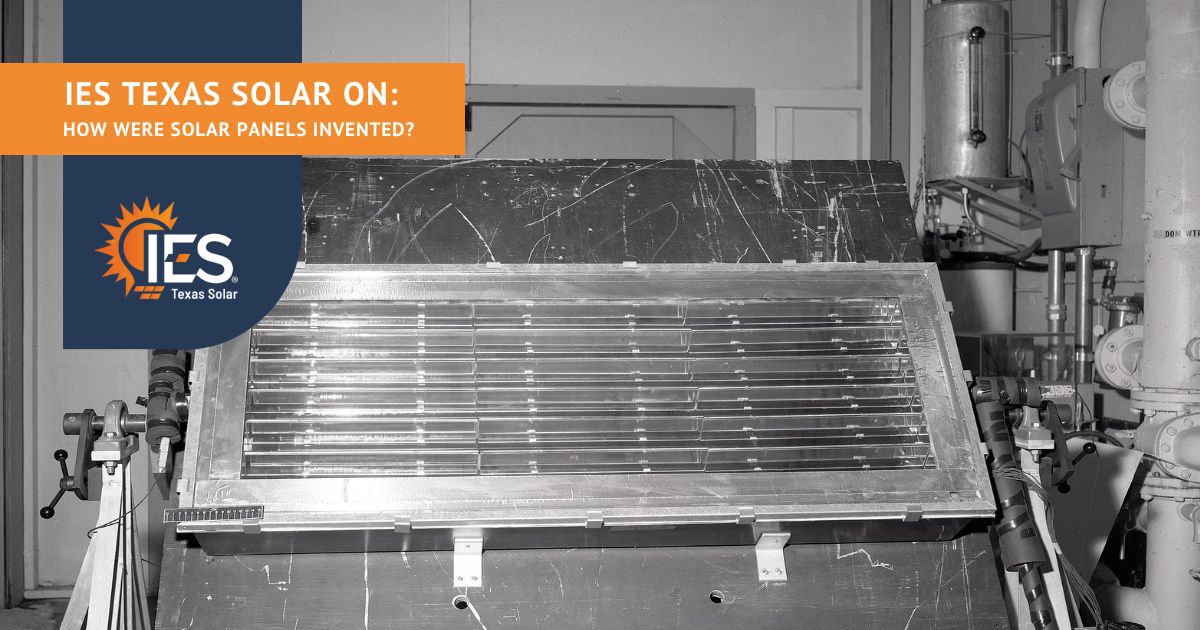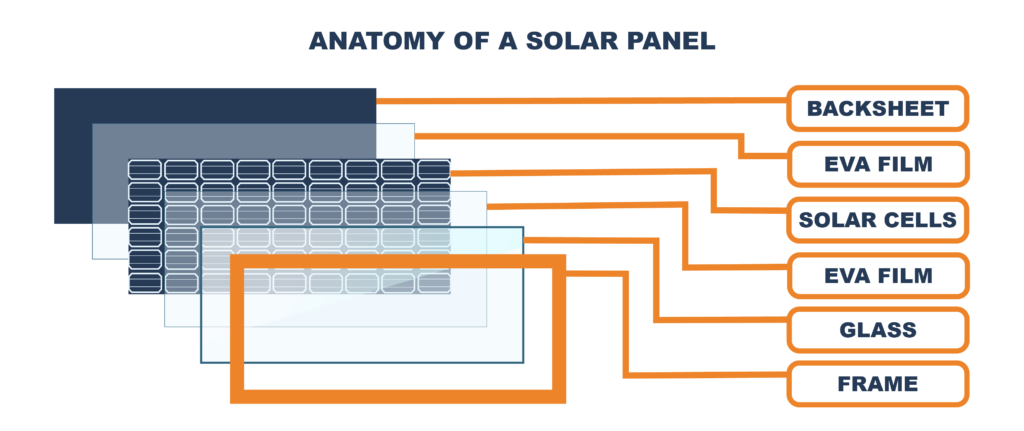
Time to read: 5 minutes
Date: December 8, 2022
Solar technology is much older than many people realize. From the late 1800’s to the middle of the 1900’s, brilliant inventors and scientists experimented with and studied electrodes and light. In America, many of these incredible minds set the stage for the birth of a new renewable energy source that would change the world. While more Texans are installing solar powered systems than ever before, they took quite a bit of time to develop into the sleek, shiny electricity producing power houses they are today.
In one of our previous posts, we went through a very brief rundown of the history of solar panels. In this article, we’ll be taking a look at the very beginnings of how solar panels were invented and more of the history behind how solar panels were first created.
Beginnings of solar panels
Early on in the 19th century, researchers were studying the different ways that light had an effect on electrolytic cells. Eventually in 1839, a French physicist named Alexandre Edmond Becquerel conducted experiments at the age of 19 in his father’s lab with platinum electrodes by coating them in silver bromide or silver chloride. By coating these electrodes in these chemical compounds, the electrode produced voltage and current once it was exposed to light. Through this experiment, Becquerel had just invented the world’s very first photovoltaic (PV) cell.
Later in 1873, electrical engineer Willoughby Smith stumbled upon the discovery that selenium was photoconductive. At the time, Smith was testing selenium for its resistance properties and was testing selenium’s effectiveness as an underwater cable. While the selenium Smith was using worked just fine during tests, it didn’t deliver consistent results. Upon a closer look, Smith realized that the selenium rods he was using were far more conductive when they were exposed to stronger light.
It wouldn’t be until 1884 that the first actual solar panel would come along thanks to Charles Fritts, an American inventor that created the first working selenium cell.
Early to modern solar panels
Early solar panels weren’t nearly as effective as the ones that we use today. The first rooftop-mounted solar array wasn’t very efficient – it was only able to reach a conversion efficiency of around 1%. The panels themselves were created by taking selenium and coating it in a layer of thin gold.
As a conductor, gold was a great choice being that it conducts heat and electricity effectively. Unfortunately, the cost of the materials used to make these panels and the low conversion rate made it very unreasonable as an energy producer. The type of solar cells that are used in the solar panels that we have today wouldn’t be created until a bit later in the 1900’s.
During the early 1900’s, there was a bit of a lull for the development of solar technology. Luckily, Albert Einstein’s work on the photoelectric effect (which he won the Nobel Prize for) would significantly increase interest in the field. Eventually, a researcher at Bell Labs would file for the first patent of a solar cell that would become the basis for the solar panels that we use today.

Bell Labs and the solar panels of today
In 1940, semiconductor researcher Russell Ohl would make a discovery that furthered the advancement of solar technology. While looking over some silicon samples he noticed that one of them had a crack in the middle. After observing it, he noticed that current flowed through the silicon sample whenever it was exposed to light.
This crack was between the positive and negative sides of the sample, meaning that Ohl had accidentally created what is called a p-n junction, which is the foundation of a solar cell.
In modern solar cells, this set up in which the positive and negative sides will both become charged and create an electrical field. Once this is attached to a circuit and is exposed to strong light, a current begins to flow. This solar cell, like the types that came before it, was only about 1% efficient. Several years later, Bell Labs would announce the first viable solar cell.
Now we get to where things really began to take off with solar cells. In 1954, Bell Labs unveiled the first photovoltaic (PV) cell that had an efficiency of 6%. Like Ohls solar cell, this one was created using silicon. This development was a massive step forward for solar technology. At this point, solar was now viable enough to be commercially manufactured for space exploration.
A few years later in 1958, Vanguard I was launched. Vanguard I was the very first satellite to use solar panels to create electricity, and every satellite launched since then has used solar panels. Since then, research into solar power has sky-rocketed with advancements that have led to the incredibly efficient solar panels that we have today. Now we have solar panels that have an efficiency as high as 42%! Different types of materials are currently being experimented with in the production of solar cells to further increase their efficiency while lowering the cost of production.
Join the solar community and become part of solar history!
Solar panels have a long and interesting history that has led up to today, where solar power is the cheapest renewable energy source on the planet. A solar powered system is the futuristic solution that your home needs to cut costs on electricity while helping the environment. Solar panels can capture sunlight and generate electricity for your home, and installing backup batteries can give you even more benefits in the form of solar buyback. You can also join the rapidly-growing number of Texans who are installing Generac® home standby generators to prepare for power outages.
If you are considering switching to solar for your home or business, reach out to us by going to our website, iestxsolar.com, or by giving us a call at (855) 447-6527.
Sources:
https://www.smithsonianmag.com/sponsored/brief-history-solar-panels-180972006/
https://www.aps.org/publications/apsnews/200904/physicshistory.cfm
https://solarmuseum. org/history/